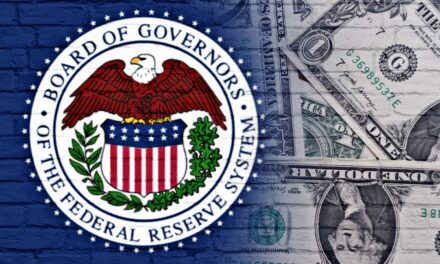The holidays are here, and with them comes plenty of food, fun and wonderful time with family.
But these few days off also provide us with a valuable opportunity to reflect on what’s been one of the most topsy-turvy investing years of our generation.
Despite a seemingly endless amount of unpredictable twists and turns, the market seems to be on track to hit the 15% target I set all the way back in January.
And even more importantly, we’re seeing the market’s direction start to shape up for the year ahead.
Watch today’s video below for the full story:
Video Transcript:
Happy Thanksgiving. I’m Andrew Zatlin, this is Moneyball Economics, this year I wish you nothing but a wonderful holiday season.
I hope you are surrounded by friends and loved ones. I hope you have more Turkey than you can possibly eat. I’m very thankful this year I’m going to be surrounded by my family. My son comes home from West Point. I’m going to be enjoying Thanksgiving with my beautiful wife, my beautiful daughter, friends and everything.
I’m also thankful to you for joining me at Moneyball Economics. I hope that this year has been fruitful, profitable, and I look forward to next year with you as well.
In fact, speaking of next year, now that we’ve got some time to lean back, now that we’ve got some days off, let’s take advantage of that time to reflect on where we’ve been and where we’re going.
I want to look in the rearview mirror, especially now that we’ve got better economic data, more recent and current economic data because it really reinforces what I’ve been sharing with you, where we’ve been and especially where we’re going…
I believe that the worst is behind us of whatever kind of economic streamlining we had to do, and the stage is set for a very strong 2026. Strong economically and strong in the markets. And I want to share with you what I mean by looking at the jobless claims data.
Because quite frankly, jobless claims data is telling us what we need to know about what’s developing today and coming down the pipeline, and quite frankly, it also reinforces what I’ve been sharing with you to date all year.
Let’s take a step back. Okay, last year we were in decline…
It didn’t matter who was going to be president, the economy was downshifting, corporate profits year over year, the growth was downshifting from a robust 11% double digit growth to a mere 5% and going lower.
So companies were faced with the need to streamline their operations. They were doing layoffs.
Now, why were they getting to that point? Well, it’s kind of the flip side of COVID.
COVID drove a lot of activity, a lot of money flooded the system, a lot of economic activity, but at the same time, it also drove a lot of over hiring. Unfortunately, a lot of businesses in 2021, 2022, they saw the boom times and they extrapolated and said, we’re always going to be here.
That’s kind of like the warm jacket-selling retailer during a snowstorm thinking the snowstorms going to last forever. Instead, companies like Meta and Apple and Facebook all suddenly discovered that in fact, once shelter in place ended and people went outside, they would be spending a lot less time in front of their computers. They would be spending a lot less money accordingly.
So fast forward, we were in a cyclical decline, and that cyclical decline was especially focused on high tech because they did a lot of the over hiring, but they weren’t the only ones. Transportation, because remember in COVID, you had everything shipped to your door? Well, truckers, there were too many.
In any event, we then had had the Trump factor.
Trump comes in, creates tons of uncertainty, especially with tariffs that hits manufacturers really hard.
Suffice it to say you take a cyclical decline, you add on top of it, external shocks from Trump and the economy came to a slower rate. What happened is companies stopped hiring. They wanted to get that profit margin up, and so what did they do? They had to streamline a lot less discretionary spending on travel and entertainment, a lot less spending on hiring, in fact, reducing the workforce and so on.
That was what the first half of the year was coping with the decline, coping with the Trump factor. But as I said, for the past couple months, once we were through that, once people were back from summer vacation, they saw that in fact, maybe they had overreacted companies then stopped firing and instead are looking at hiring.
They’re looking at spending not yet, but starting next year, and that’s exactly what the jobless claims data is telling us.
We now have October and November jobless claims data, and I did a deep dive and I got to tell you some remarkable things popped up…
First of all, the economy did not break.
The economy has been holding very well, even with the shutdown, very benign type of scenario we’re in, but that sounds contradictory given all this massive layoff fear that we heard, we heard tons of layoffs were underway more than last year, and that is true, but I’d like to throw out two things to you.
Again, most of those layoffs were in the first half of the year. We’ve wound down, companies are now at the tail end of whatever streamlining they needed to do. Streamlining means you’re lean and mean, and if there is any growth coming down the pipeline, well, you’re not ready for it. You got to start expanding again. That’s where I think we are next quarter.
But for right now, we’ve got this streamlining underway and also when you take a look at a lot of these layoffs, they’re not domestic. Intel, for example, did a lot of layoffs offshore, as did Microsoft and so on and so on. That means a lot of these layoffs were less painful for the US market than is perceived. That’s why the jobless claims have been moderate.
But anyway, fast forward and when I looked at the individual sectors that have been over the course of time affected by this readjusting, shall we say, a couple things popped out.
Now, by and large this year compared to last year, we’ve got about 10% more jobless claims. Historically speaking though it’s still a strong economy, the level of continuing claims, the level of initial claims, very benign like I said, but still up from last year.
Having said that, what’s interesting is there are exceptions and those exceptions tell the story that I want to share with you.
Two sectors actually show substantial growth. One of them is manufacturing and one of them is IT.
Now, remember what I said, IT has been doing layoffs, hundreds of thousands of workers laid off in the IT space, and yet I’m here to tell you these days they’re actually seeing fewer jobless claims than last year.
Same thing for manufacturing. It looks like all those layoffs that hit, that the tariffs created, that happened in the first half of the year, it’s done, and so as a result, we’ve got manufacturing strengthening. We’ve got it strengthening or strengthening now firming up, no longer sinking.
In fact, compared to last year kind of improving manufacturing of course was hit by the tariffs, but also there’s reasons why they’re doing better than last year.
One of them is we don’t have strikes. Well, Boeing, a couple thousand people in August, but nothing like last year where the dock workers froze everything, where GM and Ford were hit mean and on and on and on.
This year, no strikes and strangely enough, that’s probably coming out of the fact that not only have a lot of contracts been done, but quite frankly the job market for the manufacturing and transportation space has been soft. Transportation continues to be a losing space, but again, that’s because they ramped up so hugely because during COVID, everything had to be dropshipped to the doorway.
In any case, what I’m seeing is by and large companies streamlined across the entire economy with the notable exceptions of IT and manufacturing, and I would just say it, and manufacturing would simply earlier to do the necessary trimming. Where we are today is that gap between this year and last year peaked in July.
We had about 7% more jobless claims this year in July than the previous year, but now it’s down to about 4%. That gap is closing. It tells me that there was a peak as we expected, a peak in the first half of all these layoffs being announced and then following through, people filing for claims, but we’re done.
It’s been completed and now we’re on the flip side, which is growth next year. I see nothing but reasons for growth. Companies are seeing inflation going down, steady consumer spending.
They’re now at the point where after a year of holding back on spending equipment’s falling apart, they’ve got to buy new equipment. Inventories are now super low. They’ve got to resupply the inventory and it’s just on and on and on. You have all these reasons to see a growing economy next year, and there’s a positive feedback loop that goes with that.
As growth comes in, more growth comes in. Basically, it’s not so much that the foot has come off the brakes, it’s that the foot is about to step on the gas. Not this month, December, you’re not going to really see anything.
Things are winding down, but everyone’s getting excited for next year and that’s why I’m very bullish. Again, I said 15% for 2025. We are at about 15% with one month to go. I’m going to say it could be even greater next year. How about that? As you go into Thanksgiving, feast on that positive news.
Enjoy your eggnog folks, we’re it to win. Zatlin out.





